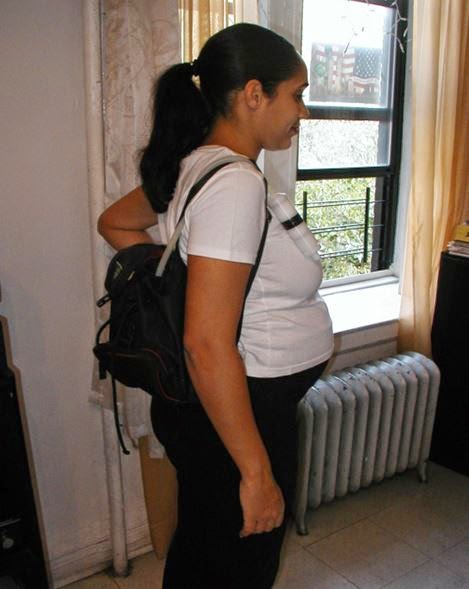Is that an appropriate question or might some say this is too extreme? Let’s review some things to consider:
Negative Effects
Past research from Columbia University showed the effects of exposing pregnant New York women to higher levels of polycyclic aromatic hydrocarbons (PAHs). Dr. Frederica Perera and her team from the Columbia Center for Children’s Environmental Health have found decreased birth weight and head circumference, increased asthma, developmental delays by age 3, increased childhood obesity and lower IQ scores by age 5 as the child ages following higher in utero PAH exposure.
- PAHs affect the unborn in many negative ways.
- Research by the United States Geological Survey says that coal tar sealants are high in PAHs and for years continue to off-gas high levels of PAHs to the air.
- The concentration of PAHs above a coal tar sealed lot exceeds the concentration where fetal developmental problems occur.
- Even product labels say that pregnant women should avoid contact with it.
| This graph demonstrates that PAH emissions to the air exceed concentrations that have been shown to have statistically significant birth outcomes. |
Negative Effects
 |
| PAH Monitor by Perera. |
Now this team released new information on the lifetime costs of a lower IQ from PAH exposure. By applying the statistical effects across a similar demographic pool in New York, a lost lifetime of wages of 63,462 would be over $200 million. The maximum concentration of PAH exposure was 36.47 ng/m3.
This estimate does not include the costs with additional neurotoxic, respiratory or carcinogenic effects for the individuals.
According to Dr. Perera, “Our analysis suggests that a modest reduction in urban air pollution would provide substantial economic benefits and help children realize their full potential.”
Full results are published in the Journal of Public Health Policy.
USGS Research
Full results are published in the Journal of Public Health Policy.
USGS Research
Does this relate to exposure coal tar pavement sealers and if so, how? Van Metre et al have done a few papers on air quality and PAH concentrations. Here’s a summary of their findings:
- Annual PAH emissions from coal tar sealants exceed those from US vehicular emissions. Engine exhaust is usually cited as a major contributor to urban PAH air pollution.
- There was a 50% loss of PAHs from the product in the first 45 days after application via airborne releases.
- The maximum concentration measured after the application of a coal tar sealant was 297,000 ng per cubic meter. The OSHA limit is 200,000 ng per cubic meter1.
- Concentrations of one PAH above sealed lots were 10–15 times higher than those measured for global industrial cities, but were not higher than 2 Chinese industrial cities.
- Mean concentration 4 feet above a coal tar sealed surface is 138 ng per cu. meter but upper range that affects the unborn is just 36 ng per cu. meter2.
Concentrations of PAHs in air over recently sealed pavement are very large, but they remain higher than the effects level found in the Columbia research for years after application.
If you’re expecting, please avoid all controllable exposures to PAHs including secondhand smoke, auto exhaust, industrial pollution and of course avoid coal tar sealed surfaces.



